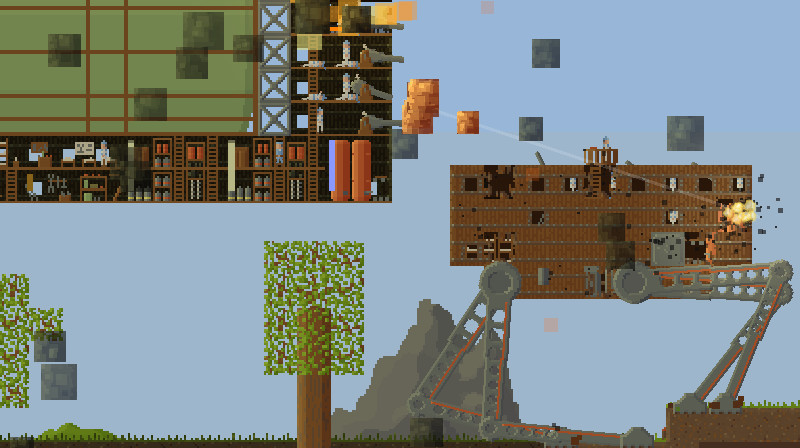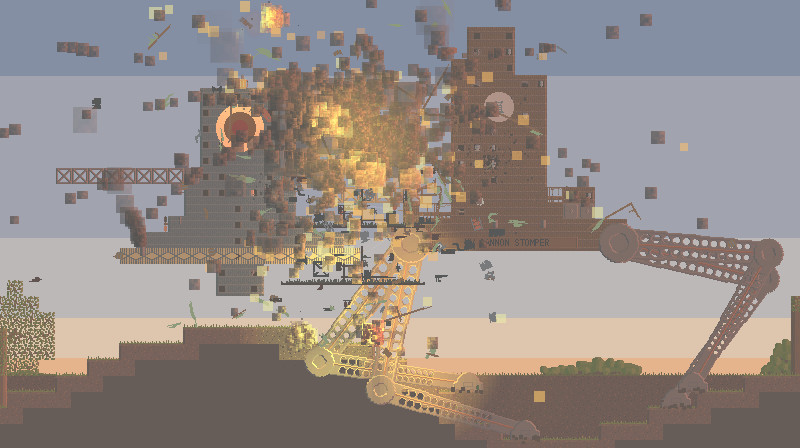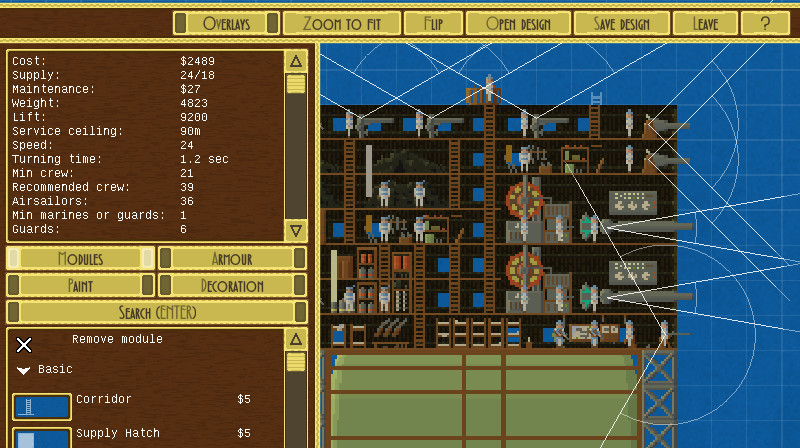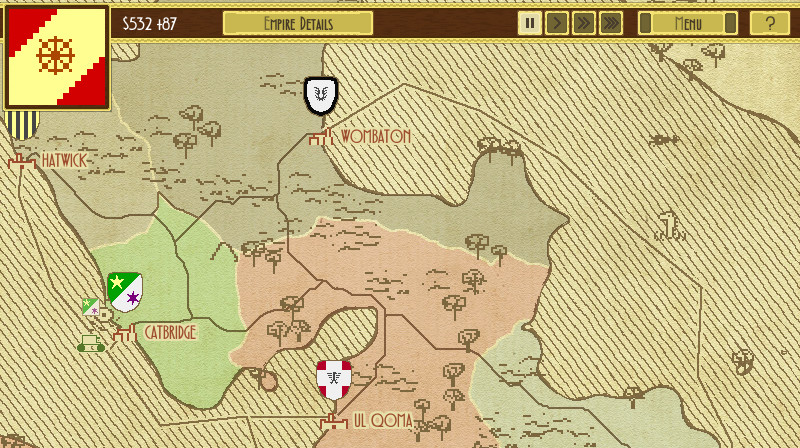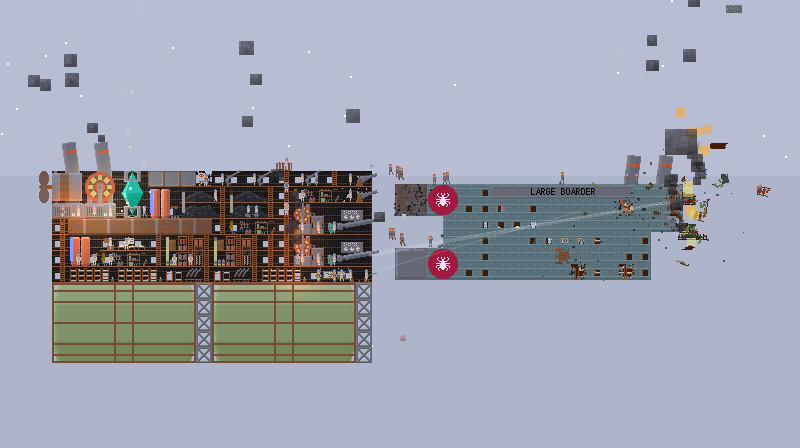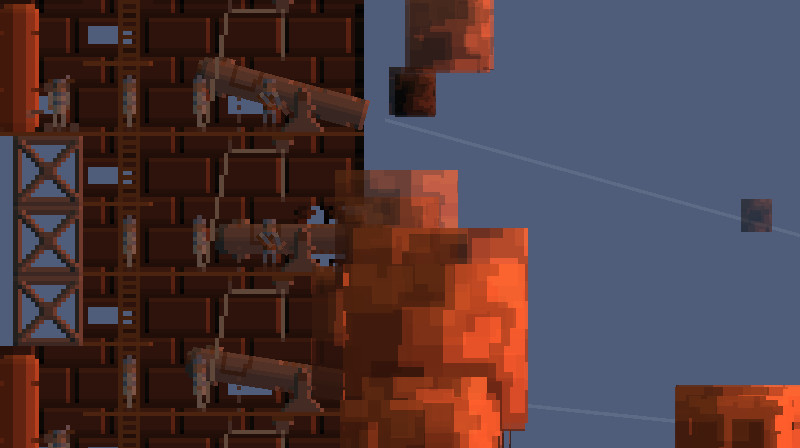In the game, ships are viewed side-on, and their modules are operated by individual crew members. During combat, players give high-level commands to a small fleet, positioning their ships, ramming and boarding others. Ships and terrain are fully destructible: they can catch fire, explode, break apart, and fall. Players can also compete against one another in Internet and LAN matches.
The ships are highly detailed, teeming with sailors moving around at their individual tasks, like an ant farm or a cut-away drawing. The player's choices in ship layout are crucial, and an important part of the game is exploring the design space of different airships and their matching tactics.
A while ago I listened to a podcast interview with one of the developers of Don't Starve. They were discussing the design of the Science Machine, the building that lets you discover new crafting recipes.
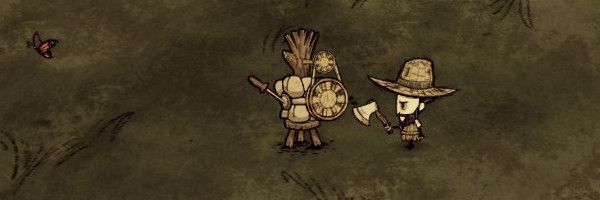
In its original version, players could dump any items they didn't want into the machine, and it would convert these items into points that could be spent on new crafting recipes. (That part of the discussion starts at 10:41 in the interview.)
The idea was that the machine would act as a sink for surplus items. Instead, players set up vast farms to produce as many grass bushels as possible. These produced only a tiny number of science points, but they could be reliably and safely generated in vast quantities.
This reliability and safety made the game really, really boring to play. Users had optimized their play style to be effective but boring. In the end, the developers changed the Science Machine to just directly unlock the new recipes.
The point here is that the mere presence of an option can completely unbalance gameplay. Yes, of course players could have decided not to do grass farming, but these kinds of self-imposed boundaries are hard to draw. Having easy access to grass is useful, but at what point are you grinding instead of playing? You may have had the experience too that you can often only tell that you're really bored with a game when you've been bored for hours. And for a certain, common kind of optimization-happy player, not using a game's mechanics optimally feels like missing the point.
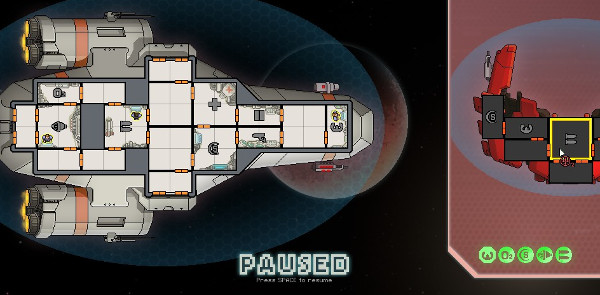
Here's another example. I played FTL: Faster than Light a fair amount when it first came out. But the ability to pause the game ultimately made me optimize the game to be boring. A lot of things in FTL depend on very careful timing: firing weapons in just the right sequence, deploying crew, opening and closing doors, re-distributing energy. So over time, I paused the game more and more often to make sure everything was running correctly, and to give carefully timed commands. Eventually, I only let the game run for about a second before pausing again.
I tried playing the game while abstaining from the pause feature, but that made the game really hard and stressful. So clearly some use of pause was necessary, but where to draw the line? More pausing always meant playing more effectively, but boredom would creep in.
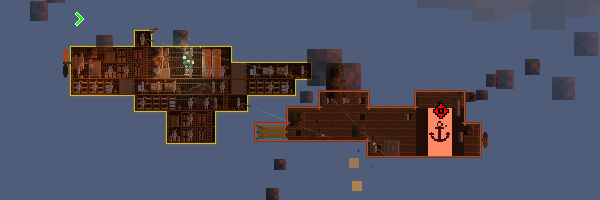
This brings me to why there is no way to precisely target weapons fire in Airships, selecting individual modules instead of entire ships. It wouldn't be hard to add to the game, but it would mean that to play optimally, you'd have to constantly adjust targeting on potentially dozens of ships. It feels frustrating that you can't give more precise commands, but it would ultimately feel more frustrating if you could.
Minimum Setup
- OS: Ubuntu/Debian/Mint
- Processor: 1.8 Ghz+Memory: 256 MB RAM
- Memory: 256 MB RAM
- Graphics: 1 GB VRAM+
- Storage: 1 GB available spaceAdditional Notes: Not currently compatible with Intel HD graphics controllers. May run on other Linux distros. but no guarantees.
Recommended Setup
- OS: Ubuntu/Debian/Mint
- Processor: 2.2Ghz+ Dual-coreMemory: 2 GB RAM
- Graphics: 2 GB VRAM+Network: Broadband Internet connection
- Storage: 1 GB available spaceAdditional Notes: Not currently compatible with Intel HD graphics controllers. May run on other Linux distros. but no guarantees.
[ 6425 ]
[ 3822 ]
[ 2906 ]

